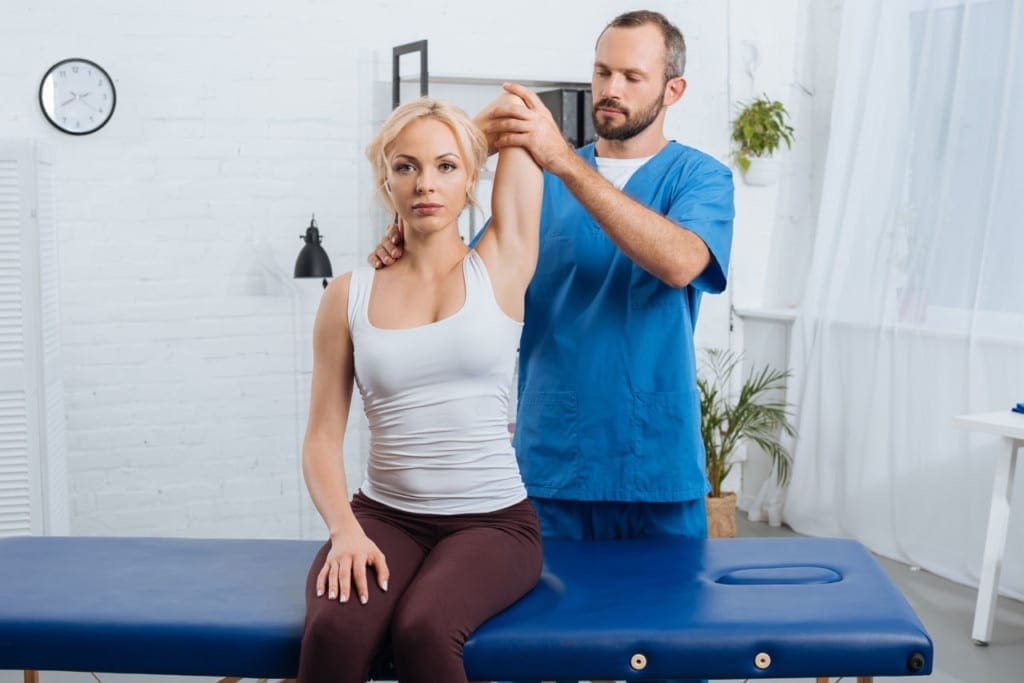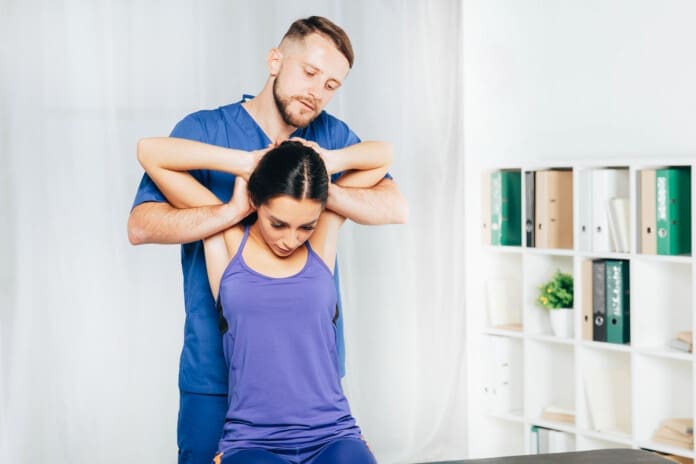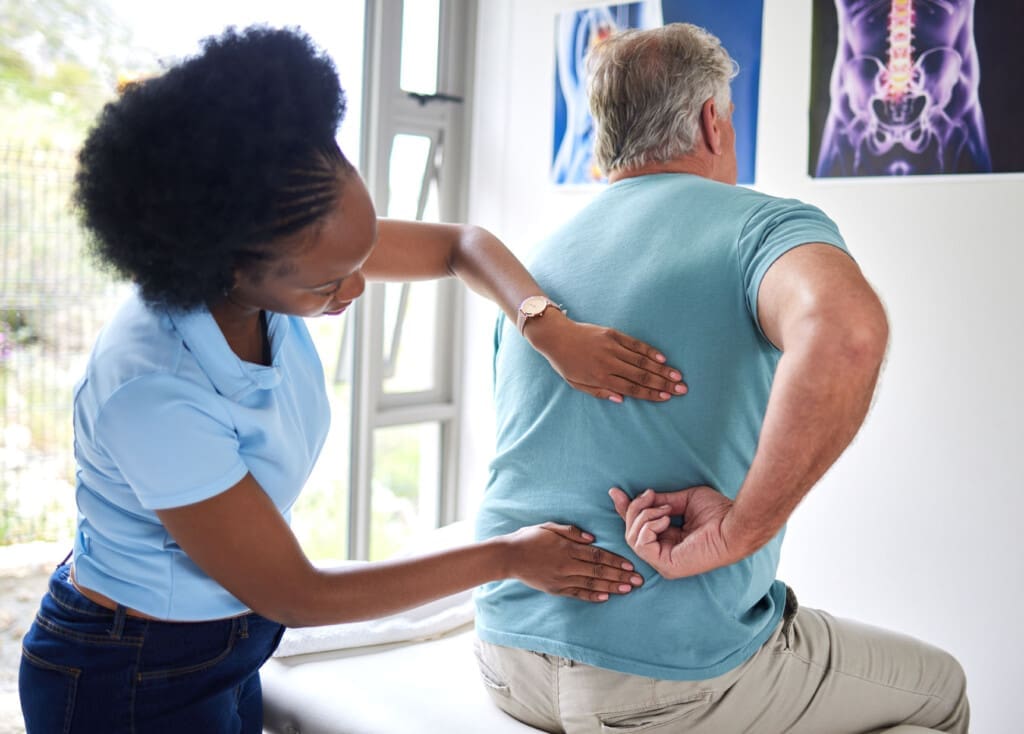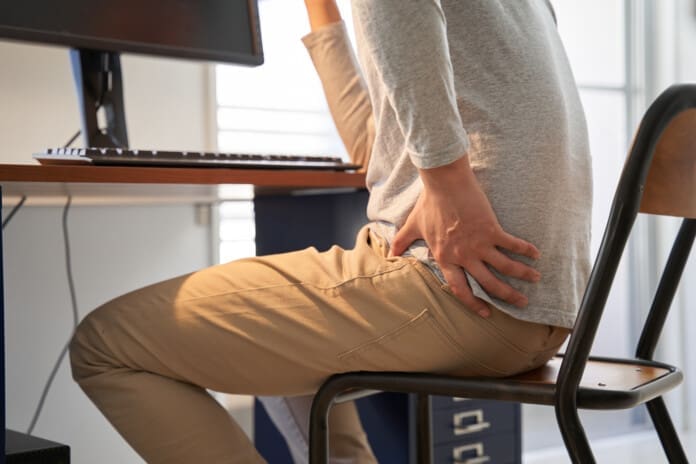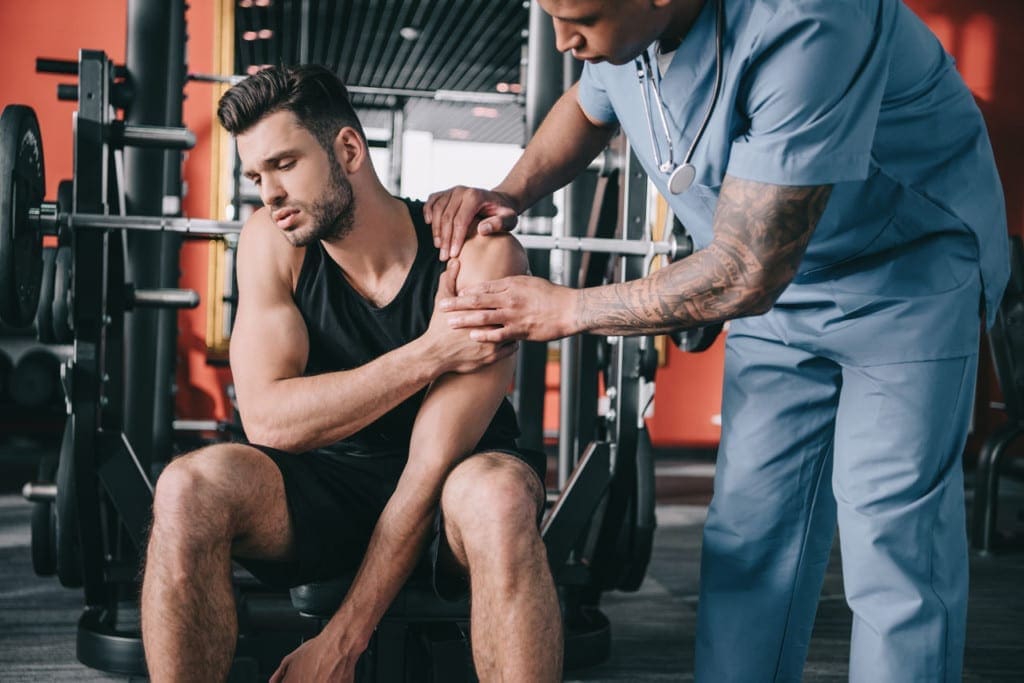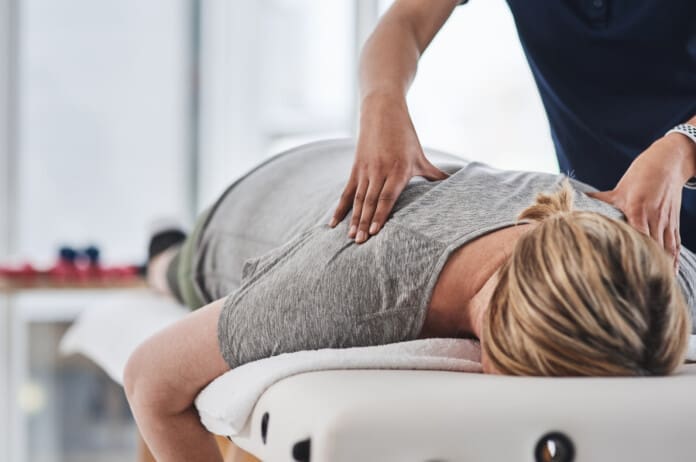Table of Contents
El Paso’s Autumn Harvest: Seasonal Nutrition, Easy Recipes, and Chiropractic Care for Pain Relief

Fall’s Healing Power in El Paso
As September and October bring cooler breezes to El Paso, local farms burst with a colorful mix of late-summer and early fall produce. Apples, pears, pumpkins, and sweet potatoes shine alongside vibrant vegetables like broccoli, carrots, and leafy greens. These nutrient-packed foods, found at places like the El Paso Farmers Market, fuel the body and support recovery from pain and injury. At our clinic, specializing in natural pain relief and functional restoration, we observe how these seasonal picks can enhance healing for individuals experiencing lower back, leg, or nerve-related discomfort.
Led by Dr. Alexander Jimenez, DC, APRN, FNP-BC, our team uses advanced diagnostics and integrative therapies to address pain from motor vehicle accidents (MVAs), sports injuries, or daily strains. Our approach, rooted in chiropractic care and nutrition, targets the root causes of issues like inflammation or misalignment to restore mobility without the need for drugs or surgery (Sciatica Pain and Treatment Clinic, n.d.a). This guide explores El Paso’s fall harvest, offers simple recipes, and demonstrates how our clinic’s methods align with seasonal eating to alleviate pain and promote wellness.
Whether you’re grabbing fresh produce or seeking relief from lingering discomfort, fall in El Paso is the perfect time to nourish and heal. Let’s dive into the season’s offerings and how they support your recovery journey.
September’s Bounty: A Bridge from Summer to Fall
September in El Paso blends warm days with the first hints of autumn. Farms yield crisp apples, like Gala or Fuji, packed with fiber to aid digestion and reduce inflammation (Orchard at the Office, n.d.). Pumpkins emerge, their beta-carotene-rich tissue is ideal for those recovering from physical stress (Center for Science in the Public Interest, n.d.). Sweet potatoes, rich in vitamin A, offer steady energy for active El Pasoans, while pears provide a sweet, antioxidant-rich bite to soothe swelling (Texas Real Food, n.d.a).
Vegetables like broccoli, rich in vitamin C, and carrots, packed with beta-carotene, hit the markets early. Leafy greens—such as spinach and kale—deliver magnesium to relax tense muscles, a common issue in nerve-related pain (Texas Real Food, n.d.a). Prickly pears, a desert staple, linger from summer, their vibrant juice helping to combat oxidative stress (The Fit Cookie, n.d.).
Our clinic ties these foods to pain relief. Dr. Jimenez’s assessments, utilizing neuromusculoskeletal imaging, pinpoint issues such as spinal misalignments that cause discomfort. Seasonal produce complements our chiropractic techniques, as outlined in our care guide for musculoskeletal issues, which helps reduce inflammation naturally (Sciatica Pain and Treatment Clinic, n.d.b). Grab these fresh picks at local markets to support your body’s healing.
October’s Harvest: Rich Flavors for Deeper Recovery
October deepens El Paso’s fall vibe. Apples and pears are at their peak, making them perfect for snacks or baking, while also supporting heart health with their fiber content (A-Z Animals, n.d.). Pumpkins dominate, their flesh ideal for soups that aid joint and skin repair, crucial for injury recovery. Sweet potatoes remain a powerhouse, helping to stabilize blood sugar and sustain rehabilitation efforts. Persimmons, ripe and honey-sweet, add vitamins A and C for immune support (Mimi’s Organic Eats, n.d.).
Vegetables take the spotlight. Broccoli, now abundant, fights inflammation with sulforaphane. Carrots sweeten in cooler soil, boosting tissue regeneration. Leafy greens like kale, cabbage, and spinach, plus butternut squash and Brussels sprouts, pack fiber and sulfur compounds for detox and joint health (Texas Real Food, n.d.b; The Fresh Market, n.d.a). These align with our nutrition protocols for tissue repair, speeding recovery from physical trauma (Sciatica Pain and Treatment Clinic, n.d.c).
El Paso’s extended growing season keeps these foods fresh and affordable. Dr. Jimenez’s integrative approach, as seen in our trauma healing insights, utilizes these nutrients in conjunction with therapies like massage to address the causes of pain and prevent chronic issues (Sciatica Pain and Treatment Clinic, n.d.).
Fruits for Pain Relief: Nature’s Anti-Inflammatory Allies
Fall fruits are recovery boosters. Apples, abundant in September, contain pectin that helps lower inflammation, benefiting individuals with joint or nerve pain (Orchard at the Office, n.d.). Pears, which peak in October, ease digestion and swelling, supporting MVA recovery (A-Z Animals, n.d.). Pumpkins, rich in antioxidants, help repair tissues strained by spinal trauma (Center for Science in the Public Interest, n.d.; Sciatica Pain and Treatment Clinic, n.d.e).
Sweet potatoes fuel healing with vitamin A, while prickly pears offer hydration and antioxidants, perfect for El Paso’s active lifestyle (The Fit Cookie, n.d.). Persimmons, which ripen in October, boost immunity with their nutrient-rich profile (Mimi’s Organic Eats, n.d.). Our clinic’s integrative cyclist injury treatments highlight how these fruits reduce oxidative stress, complementing therapies like acupuncture (Sciatica Pain and Treatment Clinic, n.d.f).
Dr. Jimenez’s methods, detailed in our chiropractic care overview, utilize these foods to enhance outcomes for sports injuries or chronic pain, thereby preventing long-term complications (Sciatica Pain and Treatment Clinic, n.d.).
Vegetables for Resilience: Supporting Recovery from Pain
Vegetables anchor fall’s healing potential. Broccoli, starting in September, delivers sulforaphane to reduce inflammation and pain from nerve compression (Texas Real Food, n.d.a; Sciatica Pain and Treatment Clinic, n.d.h). Carrots, sweeter in October, provide beta-carotene, which is vital for tissue repair and recovery from physical stress (Sciatica Pain and Treatment Clinic, n.d.). Leafy greens—kale, spinach, cabbage—offer magnesium to ease muscle tension.
Butternut squash and Brussels sprouts, rich in fiber, support gut health, which our clinic links to reduced inflammation (The Fresh Market, n.d.a). These veggies align with our post-accident recovery plans, where nutrition complements durable medical equipment like braces for rehabilitation (Sciatica Pain and Treatment Clinic, n.d.). Dr. Jimenez’s diagnostics ensure precise treatment, with veggies speeding healing (Sciatica Pain and Treatment Clinic, n.d.a).
Easy Recipes: Nourishing Meals for Pain Relief
Our clinic promotes simple recipes using El Paso’s fall harvest to reduce inflammation and support pain relief. These dishes align with our chiropractic and nutritional protocols, making recovery tasty and accessible.
Soothing Salads: Light and Healing
Start with a Spinach-Apple Salad: Toss spinach, sliced apples, almonds, and feta with a lemon-olive oil dressing. Ready in 10 minutes, serves four, fights inflammation (Baylor Scott & White Health, n.d.). For variety, try a Broccoli-Kale Crunch: Mix chopped broccoli, kale, carrots, and sunflower seeds with a tahini dressing. Roast veggies at 400°F for 15 minutes first (The Full Helping, n.d.).
A Prickly Pear Gazpacho blends tomatoes, cucumbers, prickly pears, and lime—antioxidant-rich in 20 minutes (The Fresh Market, n.d.b). Or go savory: Combine pears, spinach, and walnuts with a yogurt-curry dressing for a quick anti-inflammatory dish (Denver Post, 2006). These support our post-accident massage benefits, which ease muscle tension (Sciatica Pain and Treatment Clinic, n.d.).
Warming Soups and Sides: Comfort for Recovery
Soups heal deeply. Pumpkin Soup: Sauté onions, then add cubed pumpkin, broth, and ginger; simmer for 20 minutes, and blend until smooth. Serves six, aids tissue repair (Hygge at Home, n.d.). Veggie-Lentil Soup: Cook carrots, broccoli, lentils, and spices in stock for 30 minutes for a protein boost (Nourish for Life, n.d.).
Roast a Pain-Relief Veggie Mix: Toss sweet potatoes, Brussels sprouts, and broccoli with oil, thyme, and salt; bake at 425°F for 25 minutes (Fueling a Southern Soul, n.d.). Crispy Carrots: Slice thin, roast at 400°F for 20 minutes with rosemary—rich in beta-carotene for joint health (Project Angel Heart, n.d.). These align with our musculoskeletal recovery plans (Sciatica Pain and Treatment Clinic, n.d.k).
Restorative Mains: Balanced and Pain-Soothing
Sheet-Pan Recovery Meal: Roast sweet potatoes, carrots, and chicken with cumin at 400°F for 30 minutes. Serves four, supports muscle repair (Marley Spoon, n.d.). Sweet Potato Tacos: Roast sweet potato cubes, mix with black beans, roll in tortillas, and bake with salsa—25 minutes total (Hy-Vee, n.d.).
A Veggie Grazing Board: Arrange roasted broccoli, peppers, and carrots with prickly pear salsa—15-minute assembly (Mayuris-Jikoni, 2024). Farro Veggie Bowl: Bake squash and carrots, then toss with farro and lemon for a nutrient-dense recovery dish (Italian Food Forever, 2014). These fit our nutrition for tissue repair, speeding recovery (Sciatica Pain and Treatment Clinic, n.d.c).
Treats and Drinks: Gentle Healing Boosts
Sip Prickly Pear Lemonade: Blend the fruit, strain, and mix with lemon and honey—hydration in 10 minutes (The Fit Cookie, n.d.). Persimmon Bites: Puree fruit, mix with oats, and bake for 20 minutes for an antioxidant-rich snack (inspired by Mimi’s Organic Eats, n.d.). Whipped Squash: Boil and mash with cinnamon—simple side or dessert (Taste of Home, n.d.). These support our trauma healing through massage, reducing stress (Sciatica Pain and Treatment Clinic, n.d.d).
Chiropractic Care at Our Clinic: Easing Pain Naturally
At our El Paso clinic, Dr. Jimenez combines chiropractic expertise with nurse practitioner insights to treat pain from MVAs, sports injuries, and daily strains. Using advanced imaging, we pinpoint issues such as nerve compression or spinal misalignment, which are common in lower back and leg pain (Sciatica Pain and Treatment Clinic, n.d.a; Sciatica Pain and Treatment Clinic, n.d.h). Gentle adjustments restore alignment, while integrative therapies—such as acupuncture, massage, and targeted exercises—speed recovery without the need for drugs.
For MVA-related injuries, such as those resulting from rainy weather accidents, we thoroughly document for legal purposes, ensuring patients focus on their healing (Sciatica Pain and Treatment Clinic, n.d.). Sports injuries, such as cyclist trauma, benefit from our integrative approach, which combines nutrition and therapy to prevent chronic pain (Sciatica Pain and Treatment Clinic, n.d.). Workplace or personal injuries receive tailored plans, often with durable medical equipment to aid rehab (Sciatica Pain and Treatment Clinic, n.d.j).
Patient testimonials, like Gale Grijalva’s, praise regained mobility, while Vanessa Menendez credits massage for pain relief (Sciatica Pain and Treatment Clinic, n.d.a). Our chiropractic techniques for musculoskeletal inflammation utilize seasonal foods to enhance outcomes, as Dr. Jimenez’s methods aim to prevent long-term issues (Sciatica Pain and Treatment Clinic, n.d.). Call (915) 412-6677 to start your recovery.
Fall’s Role in Pain-Free Living
El Paso’s fall harvest fuels recovery. Pumpkins, greens, and fruits reduce inflammation, aligning with our mission to restore function naturally. From market to plate to clinic, these steps ease pain and rebuild strength. Embrace the season, eat fresh, and let us guide your journey to wellness.

References
A-Z Animals. (n.d.). What Texas fruits are in season throughout the year?
Baylor Scott & White Health. (n.d.). What’s in season in autumn? 5 cozy fall recipes to make all season long.
Center for Science in the Public Interest. (n.d.). What’s in season: October produce guide.
Denver Post. (2006, August 6). Give fruit salads panache: Make them savory.
Fueling a Southern Soul. (n.d.). Roasted vegetable plate.
Hygge at Home. (n.d.). 18 cosy hygge-inspired recipes perfect for autumn.
Hy-Vee. (n.d.). Cozy fall meals made with autumn produce.
Italian Food Forever. (2014, March). Oven roasted vegetables with farro & oranges.
Mimi’s Organic Eats. (n.d.). Persimmon apple cider jam.
Nourish for Life. (n.d.). Recipes.
Orchard at the Office. (n.d.). Fruit facts archives.
Project Angel Heart. (n.d.). Crispy new potatoes with rosemary-lemon salt.
Sciatica Pain and Treatment Clinic. (n.d.a). Sciatica Pain – El Paso, TX | Sciatica Pain and Treatment Clinic.
Sciatica Pain and Treatment Clinic. (n.d.b). Chiropractic care techniques for five musculoskeletal issues.
Sciatica Pain and Treatment Clinic. (n.d.c). Nutrition for tissue repair post motor vehicle accidents.
Sciatica Pain and Treatment Clinic. (n.d.d). Post-accident massage benefits for injuries.
Sciatica Pain and Treatment Clinic. (n.d.e). 18-wheeler accident spinal trauma: Causes and effects.
Sciatica Pain and Treatment Clinic. (n.d.f). Chiropractic for bicycle trauma and auto injury care.
Sciatica Pain and Treatment Clinic. (n.d.g). Chiropractic care overview for joint and biomechanical restoration.
Sciatica Pain and Treatment Clinic. (n.d.h). Rainy weather accident risks and your safety.
Sciatica Pain and Treatment Clinic. (n.d.i). Chiropractic care techniques for musculoskeletal inflammation.
Sciatica Pain and Treatment Clinic. (n.d.j). Durable medical equipment recovery after accidents.
Sciatica Pain and Treatment Clinic. (n.d.k). Post-accident musculoskeletal recovery and pain relief.
Sciatica Pain and Treatment Clinic. (n.d.l). Dr. Alexander Jimenez DC, APRN, FNP-BC, IFMCP, CFMP, ATN ♛ – Injury Medical Clinic PA [LinkedIn profile].
Marley Spoon. (n.d.). Easy prep sheet pan piri piri chicken with sweet potatoes Brussels sprouts.
Mayuris-Jikoni. (2024, November 3). Mexican vegetarian grazing board.
Taste of Home. (n.d.). Whipped squash.
Texas Real Food. (n.d.a). Texas seasonal fruits & vegetables in September.
Texas Real Food. (n.d.b). October seasonal fruits & vegetables in Texas.
The Fit Cookie. (n.d.). Paleo prickly pear limeade (vegan).
The Fresh Market. (n.d.a). Squash guide.
The Fresh Market. (n.d.b). Gazpacho salad.
The Full Helping. (n.d.). Perfect winter chopped salad.





